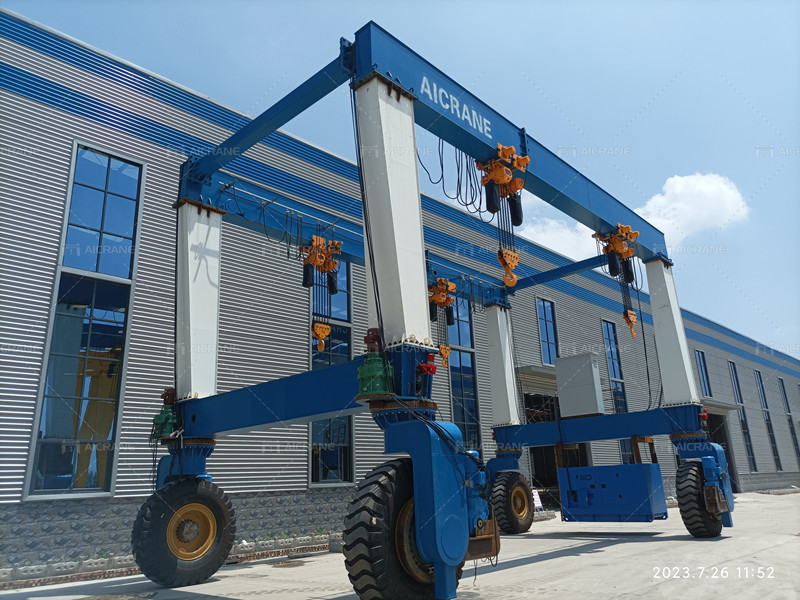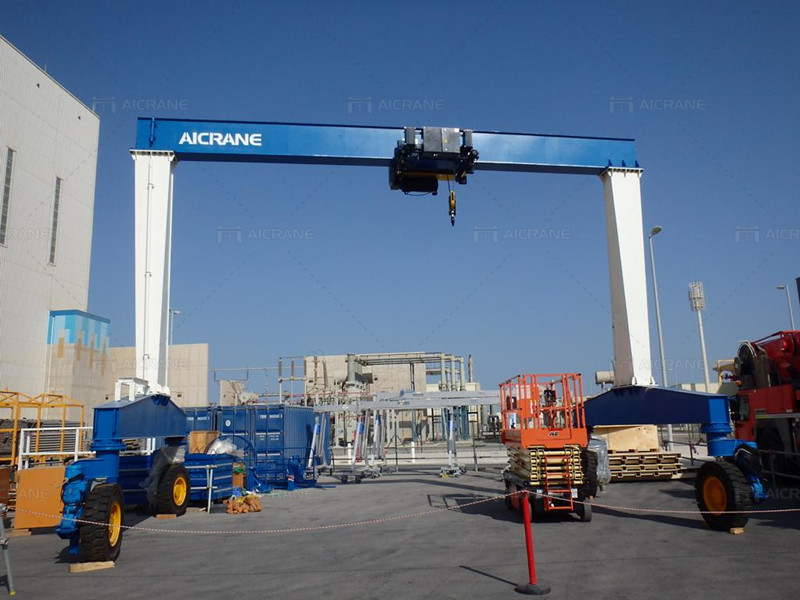The installation of a rubber-tyred gantry crane is a comprehensive process that involves meticulous planning, precision engineering, and strict adherence to safety protocols. Rubber-tyred gantry cranes are widely used in container terminals, intermodal yards, and ports for the efficient movement and stacking of shipping containers. The successful installation of an rubber-tyred gantry crane plays a pivotal role in ensuring optimal functionality, durability, and safety in industrial operations. Here, we delve into the various stages and considerations involved in the installation of a rubber-tyred gantry crane.

Site Assessment and Planning
The installation process commences with a thorough site assessment. Engineers and project managers evaluate the site to determine the optimal location for the rubber-tyred gantry crane. Considerations include the layout of the terminal, the structural integrity of the ground, and the spatial requirements for the crane’s operation. Planning involves decisions on the number of rubber-tyred gantry cranes needed, their positioning, and the overall layout to maximize operational efficiency.
Foundation Preparation
The stability and integrity of the foundation are critical for the safe and effective operation of an rubber-tyred gantry crane. Depending on the soil conditions and the crane’s specifications, foundation preparation may involve tasks such as excavation, compaction, and the pouring of concrete. The foundation provides a solid base for the crane’s supporting structure and ensures stability during lifting and movement.
Rail Installation
Rubber-tyred gantry cranes operate on a rail system embedded in the ground. The installation of these rails is a key aspect of the overall process. The rails provide a guided path for the crane’s movement, allowing it to traverse the container stacking area with precision. Proper alignment and secure fixation of the rails are crucial to ensure smooth and accurate crane operations.
Assembly of Structural Components
The assembly of the rubber-tyred gantry crane involves erecting the structural components that form the main framework of the crane. This includes the gantry structure, legs, and upper frame. The precision and alignment of these components are essential to the crane’s stability and load-bearing capacity. Bolting and welding are performed meticulously to meet engineering specifications. Whether it is single girder rubber-tyred gantry crane or the double girder variant, the assembly is very important.
Installation of Wheels and Drives
Rubber-tyred gantry cranes are equipped with rubber wheels that facilitate their mobility. The installation of these wheels, along with the drive mechanisms, is a critical step. The wheels are typically mounted on axles with drive motors, allowing the crane to move horizontally along the rail system. The proper alignment and calibration of the wheels are crucial for accurate and efficient crane movement.
Electrical System Integration
The electrical system of an rubber-tyred gantry crane encompasses various components, including control panels, cabling, and the power supply system. Electricians integrate these components, ensuring that the crane’s electrical systems are connected and functional. Control panels are programmed to manage the crane’s movements, and safety features such as limit switches and emergency stops are thoroughly tested.
Spreader Installation
The spreader is a critical component of the rubber-tyred gantry crane responsible for gripping and lifting containers. During installation, the spreader is attached to the hoist, which is part of the crane’s trolley mechanism. Proper alignment and attachment of the spreader are crucial to ensure secure and efficient container handling.

Safety System Testing
Safety is paramount in crane operations. The installed safety systems, including overload protection, anti-collision devices, and emergency braking, undergo rigorous testing. This phase ensures that the rubber-tyred gantry crane is equipped to handle various operational scenarios safely. Any issues identified during safety system testing are addressed promptly to meet industry standards.
Commissioning and Calibration
Once the various components are installed and integrated, the rubber-tyred gantry crane undergoes commissioning. This involves a comprehensive review of all systems, including mechanical, electrical, and safety components. Calibration is performed to ensure that the crane operates within specified parameters, including load capacity, positioning accuracy, and speed control.
Operational Testing
Operational testing is a crucial phase where the rubber-tyred gantry crane is put through its paces in simulated operational scenarios. This includes lifting and moving containers, traversing the rail system, and performing stacking operations. The crane’s response to different commands, load-handling capabilities, and overall performance are thoroughly evaluated during operational testing.
Operator Training
Operator training is an essential component of the installation process. Certified operators undergo comprehensive training to familiarize themselves with the rubber-tyred gantry crane’s controls, safety features, and operational procedures. Training programs cover aspects such as load handling, emergency procedures, and routine maintenance tasks. Operator proficiency contributes to safe and efficient crane operations.
Documentation and Compliance
The installation of an rubber-tyred gantrycrane involves meticulous documentation to record the entire process. This documentation includes engineering drawings, safety certifications, test results, and compliance with industry standards. Ensuring that all documentation is complete and in accordance with regulatory requirements is crucial for obtaining necessary approvals and certifications.
Final Adjustments and Fine-Tuning
After operational testing and commissioning, final adjustments and fine-tuning may be required. This phase involves addressing any minor issues identified during testing and ensuring that all systems operate seamlessly. Fine-tuning contributes to the overall efficiency and reliability of the rubber-tyred gantry crane.
Handover and Operational Deployment
The final stage of the installation process involves the official handover of the rubber-tyred gantry crane to the terminal or facility. This includes a thorough briefing for the terminal’s operational team on the crane’s features, controls, and maintenance requirements. Once handed over, the rubber-tyred gantry crane is ready for operational deployment, contributing to efficient container handling in the facility.
In conclusion, the installation of a rubber-tyred gantry crane is a complex and multidimensional process that demands expertise, precision, and strict adherence to safety standards. From site assessment and foundation preparation to the integration of electrical and mechanical components, each stage plays a crucial role in ensuring the optimal functionality and safety of the RTG crane. A successful installation not only enhances container handling capabilities but also contributes to the overall efficiency and productivity of container terminals and port facilities. Contact a reliable crane manufacturer to get more information.